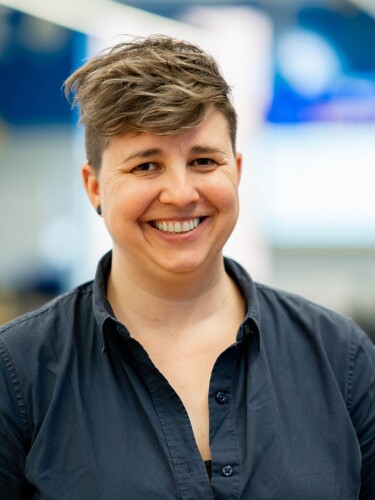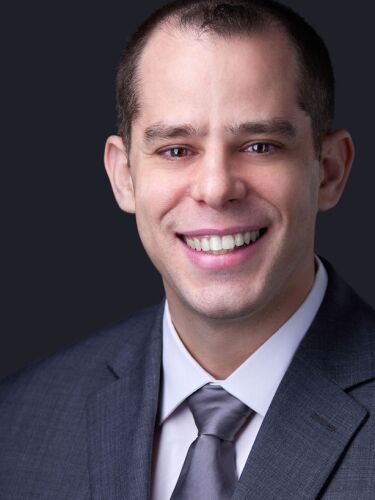At Johns Hopkins University, the biomedical engineering program’s Design Team offering lets undergraduates dive deep into clinical projects that can help them land industry jobs, get provisional patents or even start companies.
For prospective college students looking for a hands-on, experiential biomedical engineering capstone experience, the Johns Hopkins University Design Team program offers just that. Featuring clinical immersion, problem identification and description, concept development and evaluation, prototyping, testing and verification, it’s a significant selling point for the university’s biomedical engineering program (BME), according to Michelle Zwernemann, Design Team director.
“It’s really exciting not only to be able to jump in and learn so much about a clinical area, but you also get a chance to come up with your own ideas and build something,” the associate professor of practice told BioSpace. “It’s very much taking it out of the theoretical and into the practical.”
A Rigorous But Rewarding Program
At Johns Hopkins in Baltimore, the BME program is part of the Whiting School of Engineering and the School of Medicine. Its curriculum provides students with a solid footing in quantitative and life sciences, including biology and data science. Program graduates work in various industries, including biotech, pharma and medical device.
While all BME upperclassmen must complete a capstone design experience, the 18-month Design Team program—which is open to underclassmen too—is just one option. Those who want to pursue it submit applications. BME faculty members then pick 20 team leaders, each of whom draft seven team members, including three freshmen.
Each semester of Design Team is a four-credit course, which Zwernemann compared to a lecture class with a lab that might have a set number of weekly meetings. She said the time commitment ebbs and flows based on what’s happening in the project. Students can spend anywhere from 10 to 20-plus hours a week on their work, Zwernemann noted, with the longer hours coming during crunch time if they’re building or testing something. They present and celebrate their finished projects at the annual Design Day, held each May.
“It’s not a Mickey Mouse course,” Zwernemann said of Design Team. “And it really is a choose-your-own-adventure kind of course in the sense that what you put into it is what you’ll get out of it.”
An Array of Projects That Can Have a Big Impact
BME faculty members provide a queue of projects for team members to consider, including sponsored and student-proposed options. As Zwernemann explained, students review their options, complete initial research, connect with clinical mentors for the projects and write briefs on their top three picks. Faculty members then match teams with projects based on team members’ skill sets.
While the medical device versus biotech project split is 80/20, Zwernemann said there’s an increasing appetite for biotech options, and BME faculty members are considering how to best solicit and support them. She noted that in successful biotech projects, teams have a strong BME research mentor in addition to a clinical mentor so students can access lab space and do “wet lab, squishy work.”
During the past few years, BME design teams have completed over 250 medical device projects, resulting in 40 provisional patents and 16 startup companies, according to Johns Hopkins. The Design Team program has received more than $2 million in external funding since 2001 in the form of three program grants, more than two dozen project grants, and national design and business plan competition awards.
From Dealing With Adversity to Landing a Job
Design Team students experience multiple benefits, including learning how to deal with adversity as they progress through their projects, according to Zwernemann.
“How do you become a problem solver?” she said. “How do you not just become a problem solver, but articulate a problem in a way that can make it solvable?”
Design Team can also help students get industry jobs after completing their undergraduate degrees, Zwernemann noted. She said she got her first position as a product development and engineering associate at Synthes after sharing her Design Team experience in an interview. The interviewer drew a flow chart showing how what she’d described aligned with product development at the med tech company.
Zwernemann said she’s talked to countless other students who also noted using their Design Team experience in application essays or interviews.
As she considered what the program offers to prospective students, she noted what might surprise them about it.
“I think some students might actually be surprised longer term by how long the experience sticks with them and how they’re able to draw on it and use it, not even just immediately after undergrad, but also as a part of their first actual professional team or organization,” Zwernemann said. “Some of those softer skills in terms of communication with others and within teams are huge takeaways.”
How BME, Projects Benefit Undergrads
While Design Team has major benefits, BME students who don’t participate still do senior design projects that make an impact. One of those students is Priya Parameswaran, a medical sales representative with Abbott Electrophysiology. At Abbott, she creates real-time voltage and timing maps of hearts in patients who are experiencing arrhythmias.
Parameswaran graduated from Johns Hopkins in 2016 with a Bachelor of Science degree. For one senior design project, she worked with two classmates to create a wearable sensor LED T-shirt that had a force-sensitive resistor, a proximity sensor and an LED array, all powered by an Arduino. When someone approached the person wearing the shirt, the 6x7 LED array turned into a smiley face. When someone held the person’s hand, it became a heart. When the hand was released, it turned into a sad face. The team received a 99% on the project, beating out master’s students, Parameswaran told BioSpace.
Parameswaran said her BME program experience shaped her work ethic, helping her rise quickly at Abbott and influencing how companies view her: as a motivated self-starter. She also expressed appreciation for the faculty members.
“In choosing Hopkins, you have an opportunity to learn from the best of the best,” Parameswaran said. “I was learning from professors who were sharing their papers with us. That’s what we were reading. We weren’t reading out of textbooks.”
Craig Rosenblum also spoke highly of his BME program experience. The president of Himed LLC, a biomaterials manufacturer that makes surface coatings for medical implants in the dental and orthopedic markets, graduated from Johns Hopkins with a Bachelor of Science degree in 2009. He completed a Master of Science there in 2010.
For his independent research project during his senior year, Rosenblum explored dental enamel in collaboration with the Johns Hopkins Bloomberg School of Public Health. The American Journal of Physical Anthropology published the resulting research paper, “Variations in the Mechanical Properties of Water Vole (Arvicola amphibius) Molar Enamel.” Rosenblum received the Johns Hopkins Department of Materials Science & Engineering Senior Design Engineering Award for his work.
Rosenblum told BioSpace the most rewarding part of his project was collaborating with people outside of the engineering school and recognizing that his work went beyond an engineering project, with ramifications that influenced the School of Public Health. He said he also learned about the importance of having an alternate plan and staying positive when something unforeseen happened, such as equipment not working.
“Those are the experiences that allow for me to say that my education at Johns Hopkins was second to none and something that I’m so grateful for,” Rosenblum said.
For more information about the Johns Hopkins biomedical engineering program, contact the university. To learn more about the Design Team program, visit the website.
This article was written in partnership with Johns Hopkins University.




